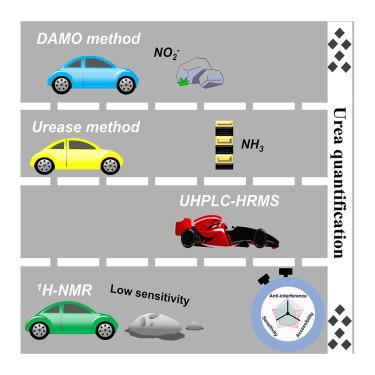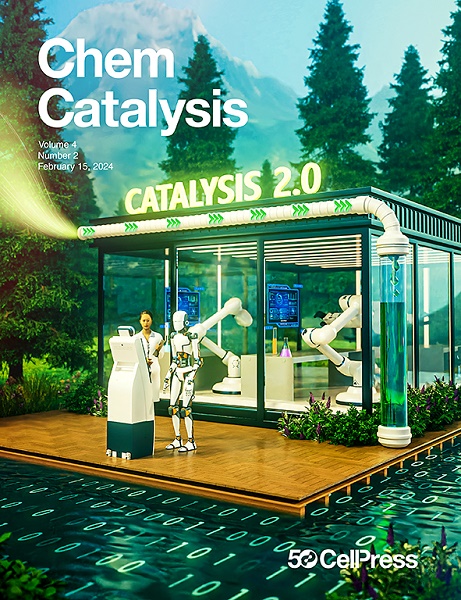在二氧化碳和含氮物种共还原过程中尿素定量的可靠和容易获得的方法
IF 11.5
Q1 CHEMISTRY, PHYSICAL
引用次数: 0
摘要
在温和的条件下,通过二氧化碳和氮源的共同还原进行电催化尿素合成,为传统方法提供了一种极具吸引力的替代方案。然而,由于尿素产量低且副产物种类繁多,尿素的定量分析面临着巨大挑战,从而引发了人们对催化剂性能可靠性的担忧。本研究系统地评估了实际电化学系统中常用的方法(脲酶、二乙酰一肟、1H-NMR),并找出了它们潜在的局限性。然后,我们提出了一种先进的分析平台,利用超高效液相色谱-高分辨质谱法(UHPLC-HRMS)对电解质中的尿素进行定量分析。该方法灵敏度高,即使在尿素浓度为 0.01 μg mL-1 的超低浓度下也不影响副产物存在时的准确性。通过一系列实验验证了该方法的可靠性,消除了假阳性现象。这些发现有助于建立电合成中尿素定量的基准,促进高效电催化剂的开发。本文章由计算机程序翻译,如有差异,请以英文原文为准。

Reliable and accessible methods for urea quantification in co-reduction of carbon-dioxide- and nitrogen-containing species
Electrocatalytic urea synthesis by the co-reduction of CO2 and nitrogen sources under mild conditions offers an attractive alternative to the conventional protocol. However, the quantification of urea poses significant challenges because of low yields and diverse byproducts, thereby raising concerns regarding the reliability of catalyst performance. This study systematically assesses the commonly used methods (urease, diacetyl monoxime, and 1H-NMR) in real electrochemical systems and identifies their potential limitations. We then propose an advanced analytical platform that uses ultra-high-performance liquid chromatography coupled with high-resolution mass spectrometry (UHPLC-HRMS) to quantify urea in electrolytes. This method exhibits high sensitivity, even at ultralow urea concentrations of 0.01 μg mL−1, without compromising accuracy in the presence of byproducts. Its reliability is validated through a series of experimental cases, eliminating the occurrence of false positives. These findings contribute to establishing a benchmark for quantifying urea in electrosynthesis, facilitating the development of efficient electrocatalysts.
求助全文
通过发布文献求助,成功后即可免费获取论文全文。
去求助
来源期刊
CiteScore
10.50
自引率
6.40%
发文量
0
期刊介绍:
Chem Catalysis is a monthly journal that publishes innovative research on fundamental and applied catalysis, providing a platform for researchers across chemistry, chemical engineering, and related fields. It serves as a premier resource for scientists and engineers in academia and industry, covering heterogeneous, homogeneous, and biocatalysis. Emphasizing transformative methods and technologies, the journal aims to advance understanding, introduce novel catalysts, and connect fundamental insights to real-world applications for societal benefit.

 求助内容:
求助内容: 应助结果提醒方式:
应助结果提醒方式:


